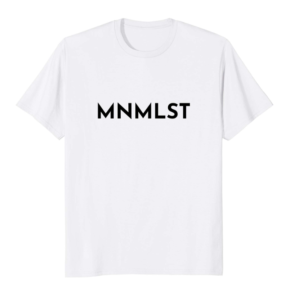Call me a biatch, but I have issues. With conceivably the nicest little girl in the world. Who is bestowing life changing magic all over the planet.
You’ve probably heard, just by being on earth, about Marie Kondo. Her book, The Life Changing Magic of Tidying Up, has helped millions of people declutter their homes and find everlasting joy. Aside from making it to Time’s 100 Most Influential, she has been called a “cultural phenomenon”, has a TV show that has gone viral, and a name that we now use as a verb.
About 4 years ago, I embarked on the path towards minimalism. I have since let go of over 80% of my stuff. I will attest to the fact that simplifying your life has numerous benefits: it gives you more time for what counts, saves you money, reduces stress, and all that jazz. But Kondo’s method of getting there isn’t sitting well with me.
Her method espouses a few basic principles: Discard everything in one big event (in one weekend, or over a few days). Once you do it, you’ll never have to tidy up again. Only keep things that “spark joy”. Sure, her method may be effective in getting to the destination. But, I think it falls short of taking full advantage of the rich, rich journey that can be had if the purging process was done a little differently. Let me explain (and offer up some alternative tips, for whatever they are worth).
Kondo Principle 1: Discard everything in one big event
Forget the basic question of who has time to dedicate full days to one project?? Letting go of our possessions is hard enough; being forced to make tough decisions on each of them NOW is highly stressful. It’s emotionally draining, burnout-inducing, and frankly, simply unnecessary. What’s the rush? If the goal of purging is to find joy and peace in our lives, why start the journey in agony? Why not wade in gently and organically?
wingwmn tip # 1: Set aside a couple of hours on a weekend to begin. Enjoy the process, turn up the music, and pick one area of your home to tackle. Some obvious places would be your wardrobe, bookshelves, kitchen cupboards, or medicine cabinets. First, discard the low-hanging fruit, aka the junk: old clothes, outdated clothes, clothes you’ve outgrown, worn out shoes, expired medicines, ineffective creams, fragrances and shampoos that don’t suit, expired food in the cupboard and fridge, instruction manuals for things you no longer own, destroyed gadgets. When you feel you’ve finished with one area, move on to the next. Do this for half an hour, an hour, a couple of hours a day whenever you can. Remember, you’re not looking for perfection. Just enough to feel like you’ve cleared out the trash.
Kondo Principle 2: Once you do it, you’ll never have to cull again
With her “one and done” mentality, Kondo ignores the reality of self-evolution. We are constantly in flux — our needs change, our desires change, our identities change. Or on an even more mundane level — we switch jobs, we mature in our fashion sense, we get tired of things. If we want our homes to continue to be our sanctuaries, our possessions have to change with us. Regular reassessment of our belongings is not only nice. It is necessary.
wingwmn tip # 2: Return to the areas of clutter in your home often (once a quarter maybe?). See if there are other things that you are able to discard. In this process, you’ll notice your critieria changing, and that you’re able to discard increasingly meaningful objects. From culling for junk, you’ll be able to parse more carefully and let go of the beautiful pair of uncomfortable shoes you never ever wear. And then, the Lladro your grandmother gave that is at odds with your midcentury modern furniture. And THEN, the trophies and medals you once thought defined you.
wingwmn tip # 3: To keep motivation levels up, it is important to move items out of your home as soon as possible. Know where you can throw, donate, or sell your items, and execute as soon as possible. The observable sensation of having less stuff and more room (rather than heaps of filled bags cluttering the hallways waiting to be taken out) will instantaneously make you happier and keep you going back for more.
By purging slowly and intentionally, we allow space for self-discovery. As we return to areas again and again, we notice an unclenching. A diminished dependence on stuff to feel secure. A maturity to view things as they are: just things.
Kondo Principle 3: Keep only that which sparks joy
Many issues here. First, the criteria to keep things that “spark joy” is vague. I can stare at my rice cooker all day and will still not arouse any emotional response to it. The criteria is also misleading. My tax returns surely don’t spark joy. Should I discard it (and spark all the joy out of my accountant)?
Second, the happiness we derive from inanimate objects is fleeting. Any depressed person who has had to resort to retail therapy will understand. So, what do we do when our things no longer spark joy? Cull again, you say? See Kondo Principle 2. (I rest my case, thank you.)
Third, the criteria is weak in averting future accumulation. If I am allowed to purchase that which sparks joy, what is going to keep me from buying the entire Moleskine store?
Most importantly, scrounging around for things that bring us joy builds a psychological dependence on inanimate objects for our emotional well-being. It empowers the object to control us; to do something TO us. If that object is lost or destroyed, we become distraught. Alternatively, if we change the criteria to keep only that “which we use”, we hold the power. Our happiness is rooted in ourselves. Possessions are managed; our environment yields and transforms in accordance with our evolution.
wingwmn tip # 4: Keep only that which is “useful now”. Useful. Now. That is, have I used it recently? Will I use it soon (and not in some future theoretical costume party that I haven’t yet been invited to)? Some suggestions:
• Books: keep only the reference books you return to often. How likely are you going to reread the novels? Not? Then discard.
• Clothes: Discard anything unworn last season.
• Kitchen tools: Discard rarely used gadgets and utensils (like the ice cream maker you used once in the summer of ’06. Or the corporate mug you swiped just because.)
• Redundant things: Discard the second bread knife, the third pair of scissors, the fifteenth table setting.
• Things that can be found online: Discard anything that can be found online such as gadget instructions (hello, youtube), CDs and DVDs (hello, spotify and netflix), travel guides (hello, google, yelp, tripadvisor, etc)
• Forgotten things: Discard anything to which you’ve exclaimed, “Oh I forgot I had this!” You didn’t miss it; you won’t need it.
• Virtual-izable things: Discard anything that can be placed in a hard drive or the cloud, such as photos and business cards (but um, copy them first).
A slow and intentional process of purging — one that respects our unfolding and does not wrest possessions from us before we are ready, one that does not cede control of our happiness to things — ultimately reveals a deeply-rooted and self-aware version of ourselves. With the ability to watch our own personal evolution, we better know who we are and what sparks in us real joy. Then, we can take this self-truth and apply them in the environments in which we place ourselves, in the thoughts we allow, in the things we say, and in the relationships we hold.
Four years in and I humbly acknowledge that tidying up is truly life changing. I’ll give Kondo that.
p.s. Speaking of purging, if you’d like to purchase a MNMLST t-shirt, click here or here.

I would love love to hear your thoughts! Please comment in the section below.


Very good explanation! It’s all about the journey, not the destination!!
You betcha!